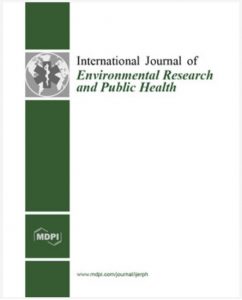Publications

Characterization of the Structural and Mechanical Changes of the Biceps Brachii and Gastrocnemius Muscles in the Subacute and Chronic Stage after Stroke
Authors: Maria Isabel Garcia-Bernal 1, 2, Paula Gonzalez-Garcia 1, 2, Pascal Madeleine 3, Maria Jesus Casuso-Holgado 1, 4, Alberto Marcos Heredia-Rizo 1, 4
Affiliations:
- Departmento de Fisioterapia, Facultad de Enfermeria, Fisioterapia y Podologia, Universidad de Sevilla, 41009 Sevilla, Spain
- Instituto de Biomedicina de Sevilla (IBIS), 41013 Sevilla, Spain
- Sport Sciences – Performance and Technology, Department of Health Science and Technology, Aalborg University, 9220 Aalborg, Denmark
- Uncertainty, Mindfulness, Self, Spirituality (UMSS) Research Group, Universidad de Sevilla, 41009 Sevilla, Spain
Journal: International Journal of Environmental Research and Public Health - January 2023, Volume 20, Issue 2, Article no. 1405 (DOI: 10.3390/ijerph20021405)
The objective of this study was to characterize the changes of muscle tone, stiffness, and thickness of upper and lower limb muscles in stroke survivors.
Forty patients with subacute or chronic stroke and 31 controls were included and measured using myotonometry (MyotonPRO), with multiple site assessments at muscle belly (MB) and musculotendinous (MT) locations of the biceps brachii and gastrocnemius muscles. Muscle thickness (ultrasonography) was obtained for each muscle. Upper and lower limb motor performance was evaluated with the Fugl-Meyer Assessment for Upper Extremity and the Functional Ambulance Category.
Overall, muscle tone and stiffness were significantly higher at MT than at MB sites. Among stroke patients, differences between the paretic and nonparetic limb were found for the biceps brachii, with lower muscle tone, stiffness, and thickness of the paretic side (all, p < 0.05). There were weak to moderate correlations between mechanical (myotonometry) and structural (ultrasound) muscular changes, regardless of the post-stroke stage. This suggests that myotonometry and ultrasonography assess similar, although different, constructs and can be combined in the clinical setting. Their discriminative ability between the paretic and nonparetic sides and between participants with and without stroke differs depending on the muscle, the functional level, and the stroke stage.
Keywords: stroke, spasticity, muscle, myotonometry, outcomes assessment, ultrasound
Topographical maps of the biceps brachii and gastrocnemius muscles revealed a heterogeneous distribution of structural and mechanical properties, with lower muscle tone, stiffness, and thickness of the paretic upper limb, and increasing tone and stiffness in MT compared with MB locations and from subacute to chronic stroke stage. Among stroke survivors, the discriminative ability of myotonometry and ultrasonography can be influenced by the assessed muscle, the stroke stage, and the level of motor performance.


